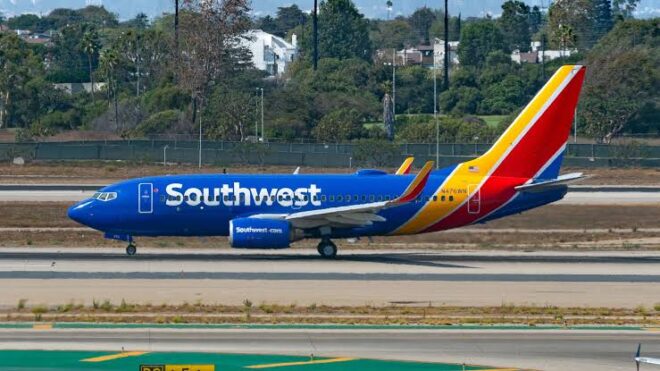
Southwest Airlines, one of the largest and most recognizable carriers in the United States, has announced the layoff of 1,000 corporate employees in response to recent internal challenges. This drastic move has sent shockwaves throughout the airline industry, raising concerns about the company’s financial stability, operational efficiency, and overall workforce morale.
Background of the Layoffs
The decision to downsize comes amid a period of internal turmoil for Southwest Airlines. Over the past few months, the company has faced mounting pressures from operational inefficiencies, rising costs, and employee dissatisfaction. Additionally, industry-wide challenges such as fluctuating fuel prices, changing consumer behavior, and post-pandemic economic uncertainties have exacerbated Southwest’s struggles.
The layoffs primarily impact corporate employees working in administrative, financial, and managerial positions. While the airline has assured that frontline workers, including pilots, flight attendants, and maintenance staff, will remain unaffected, the move still raises questions about the company’s long-term strategy and direction.
Reasons Behind the Layoffs
Several factors contributed to Southwest Airlines’ decision to lay off 1,000 corporate employees:
1. Financial Struggles: The airline has been grappling with declining profit margins due to increasing fuel costs and inflationary pressures. With economic uncertainties persisting, cutting corporate expenses has become a necessity.
2. Operational Challenges: Southwest has faced ongoing issues with flight scheduling, staffing shortages, and customer service complaints. The company is looking to restructure its operations to enhance efficiency.
3. Post-Pandemic Workforce Adjustments: Like many airlines, Southwest expanded its workforce significantly during the travel boom following the COVID-19 pandemic. However, demand has since stabilized, leading to an excess of corporate employees.
4. Cost-Cutting Measures: In an effort to remain competitive in a volatile market, Southwest is implementing aggressive cost-cutting strategies, including workforce reductions and reevaluating non-essential expenditures.
5. Company Culture and Employee Relations: Reports indicate growing internal discontent among employees, particularly regarding leadership decisions and work-life balance concerns. The layoffs may be an attempt to address ongoing tensions within the company.
Impact on Employees and Corporate Morale
The layoffs have understandably sparked anxiety and uncertainty among Southwest’s workforce. Employees who have dedicated years to the company now face an uncertain future, and those who remain are left questioning their job security. This has created a ripple effect of decreased morale, potentially impacting productivity and engagement.
Former employees have expressed their frustrations on social media, highlighting the abruptness of the decision and a perceived lack of transparency from Southwest’s leadership. While the company has pledged to offer severance packages and career transition support, many affected workers believe the decision could have been handled more compassionately.
Industry Reactions and Expert Opinions
Industry analysts have weighed in on Southwest’s layoffs, offering mixed reactions. Some view the decision as a necessary move to streamline operations and ensure the airline’s long-term sustainability. Others argue that such drastic workforce reductions could hinder Southwest’s ability to innovate and maintain its reputation for customer service.
Aviation industry expert, [insert name], commented: “Southwest has always been known for its strong corporate culture and employee-first approach. These layoffs, however, could signify a shift in priorities. While cost-cutting is essential in a challenging market, maintaining employee morale and operational stability is equally crucial.”
Competitor airlines, such as Delta and American Airlines, are closely monitoring the situation, as Southwest’s restructuring could impact market dynamics and customer loyalty.
Customer Perspective and Brand Reputation
For Southwest’s loyal customer base, the layoffs raise concerns about potential service disruptions and declining quality. The airline has long been known for its budget-friendly fares and customer-friendly policies, such as free checked bags and flexible ticket changes. However, with a leaner corporate team, some worry that Southwest’s ability to maintain these perks may be compromised.
Social media platforms have seen an influx of discussions regarding the layoffs, with some customers expressing sympathy for the affected employees and others questioning Southwest’s leadership decisions. If the company fails to reassure customers about its stability and commitment to service, it may risk losing passengers to competitors.
Southwest Airlines’ Response and Future Plans
Southwest Airlines CEO, [insert name], addressed the layoffs in an official statement: “This was not an easy decision, but it is a necessary step to ensure the long-term health of our airline. We are committed to supporting our affected employees and will continue to focus on providing the best possible service to our customers.”
Moving forward, Southwest has outlined several key initiatives to stabilize operations and regain customer confidence:
Workforce Optimization: Ensuring that remaining employees are positioned strategically to meet operational demands.
Technology Upgrades: Investing in improved scheduling systems and automation to reduce inefficiencies.
Enhanced Customer Engagement: Implementing new loyalty programs and incentives to retain customers.
Financial Restructuring: Reviewing expenditures to find additional cost-saving measures without compromising service quality.
Potential Long-Term Effects
While the immediate consequences of the layoffs are evident, the long-term impact remains to be seen. Several potential outcomes include:
1. Improved Financial Health: If executed correctly, the cost-cutting measures could stabilize Southwest’s financial situation and enable future growth.
2. Decreased Employee Morale and Trust: If not managed properly, lingering resentment among employees could lead to higher attrition rates and difficulty in attracting top talent.
3. Service Quality Concerns: A leaner corporate team may struggle to maintain Southwest’s reputation for customer satisfaction.
4. Industry Ripple Effects: Other airlines may follow suit, implementing similar workforce reductions in response to economic pressures.
Southwest Airlines’ decision to lay off 1,000 corporate employees marks a significant turning point for the company. While the move is intended to address financial challenges and improve operational efficiency, it also raises critical questions about leadership strategy, employee morale, and future competitiveness.
The coming months will be crucial in determining whether Southwest can successfully navigate this period of upheaval. As the airline industry continues to evolve, Southwest must strike a delicate balance between cost-cutting and maintaining the strong corporate culture and customer service that have long been its trademarks.
For now, the airline industry—and its customers—will be watching closely to see how Southwest adapts to this unprecedented challenge.